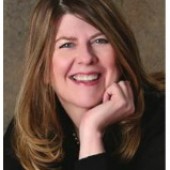“Know going in that not everyone in the room is going to love you—and that’s OK.” —Melissa Tibben
With the Catersource 2018 Call for Sessions in full swing (the deadline is June 9), I thought it would be a great time to nudge a few of you “wanna be” speakers out of the frying pan and into the fire with advice from speakers both new and veteran, but also with comments from the peanut gallery (i.e., me—someone who has watched a lot of seminars and also presented). Here are some thoughts on how you can make your presentation the best it can be.
You’ve been accepted, now what?
Duplicate the actions of Melissa Tibben, director of sales and operations, Attitude on Food, Omaha, NE, after she was selected to speak at Catersource. “When I made the announcement via social media [that I was accepted], the positivity came rolling in. It felt amazing!” Build industry support for your upcoming session by regularly posting on all of the important social sites. What day is your session? What time? Talk about your topic or tease an important takeaway. All of this pre-conference PR will build your audience base on site.
Anthony Lambatos, presenting at Catersource 2017
Writing your session
Anthony Lambatos, CEO, Footers Catering, Denver, CO, offers, “Storytelling is one of the most effective ways to get your point across. It engages the audience and validates the information you are presenting. Incorporating stories will also make your presentation flow more seamlessly and make it easier for you as the presenter, especially if the stories are first hand experiences.”
Bill Pannhoff, senior event planner, B&B Inc., Spring Lake, NC agrees. “Paint a picture: good stories are essential to learning. I work very hard on stories; I even carry a book with me day-to-day just to make notes about life that I can use to relate to the audience.” Also, “You want to open their minds to the possibility that there may be another way to accomplish the job at hand.”
About the PowerPoint: do not put so much onto your slides that the audience spends more time reading or shooting photos of them than listening to you. Tease them with a topic on screen, but offer the full complement of information yourself.
Finally, do you have a 60-minute slot for your presentation? Well then, make your actual presentation about 50 to 55 minutes, in order to allow for an introduction at the beginning, potential glitch during, and/or inevitable barrage of questions at the end because you have been so awesome.
Bill Pannhoff shared that he presented his 100th seminar at Catersource in 2017
Preparing for your session
Anthony Lambatos: “Preparation is the key to ensuring success as a first time presenter. Have a few people close to you review your slides and rehearse the presentation in front of them. Getting honest feedback from those you trust will help to improve your presentation and give you the confidence you need to deliver an outstanding seminar.”
Bill Hansen, CEO, Bill Hansen Luxury Catering, Miami, FL notes that it is important to have a strong opening to capture the audience’s attention.
Bill Pannhoff: “Practice, practice, practice. It does make perfect.” Also, “Open and close your session strong. Your first and last impressions are the ones that will live with your audience.” Finally, “Provide solid takeaways and do not self-promote or be pushy—people hate that.”
While you work toward your final presentation, note that it’s important to know your material completely, but it is best not to memorize it. Speaking here as the introvert I am, it is within my nature to want to memorize my entire presentation. However, I have discovered that one deviation or distraction from the norm can be catastrophe, whether it’s a random question from the audience, a fire alarm in the midst of class, or an intimidating presence in the back of the room in the form of an industry crush. Know your material, but not so well that the presentation seems forced or stiff.
Meryl Snow at Catersource 2017, speaking on sales and marketing
Case of the nerves?
“Even after 20 years I still get a nervous quiver right before I go on,” says Meryl Snow, Snow Storm Solutions, Philadelphia, PA. “It’s natural to want to fight the nerves, but it’s easier if you embrace it. Tell yourself it’s OK that you’re nervous, and you’ll likely move past it once you start talking about the topic that you know so well. There is really only one way to get past the fear—practice. Know your material inside and out and acknowledge the adrenaline, then let it build some excitement for what you are about to share.”
Melissa Tibben's relaxed body language while presenting at Catersource 2017 also relaxes her audience
But what if you are nervous because Meryl Snow is watching your presentation? Melissa Tibben describes her experience after several bouts of self-doubt prior to the session. “My room is nearly full. My audience is engaged. I’m maintaining eye contact with them. I’ve gotten them to laugh. OK, I’m feeling pretty good—that is until Meryl Snow walks in the door. Intimidation at its finest. I’ve always looked up to her. She’s one of the best speakers in the business and she’s in my class! This is the point where I either flop or fly. I acknowledged her presence with a smile and then, as she said later on, I ‘nailed’ the rest of my presentation!”
Bill Hansen mentioned that he used to be so nervous being in front of an audience, he could not even lead a Sunday school group in silent prayer. He credits Bill Pannhoff and Mike Roman (now deceased) as being instrumental in helping him get over his stage fright, when they appeared with him onstage his first time speaking at Catersource.
Bill Hansen: “You’re nervous for a reason: to get your adrenaline going! There’s nothing wrong with admitting to the audience that you’re nervous. If you are properly prepared, your nerves will go away in a few minutes.”
Another way to work through the fright: take Bill Hansen's lead (as mentioned in the caption above) and propose a seminar as a panel session. You will have others onstage with you to help guide and direct the materials.
Right before the session
Bill Pannhoff: “Before you speak,” he advised, “go out into the audience and greet people. Shake their hands and let them know you are real—not just a figure on a stage.”
Melissa Tibben also advocates for “chatting and bantering with the audience before your session actually starts.”
A big point here: before the banter, be absolutely certain your presentation and AV is good to go. Talk with a tech prior, make sure your laptop connections are compatible, and if you need WiFi—make sure you worked that out well before you arrived onsite. Do you want to hold a microphone, stand at a podium (nahhhh), or have a mic clipped to your lapel? If you want it clipped to your lapel, consider what you are wearing for your presentation (thin blouses do not hold up well to the weight of a microphone). Also, if you have the opportunity, scope out the room from various angles, sit in the chairs, understand where your blind spots might be. Finally, can you attend a prior session in the room you will be presenting in? Can you hear all the way from the back of the room? Can you read the screen?
Is Bill Pannhoff having fun on stage? Survey says...yes!
During the session
Bill Hansen: “Use PowerPoint to keep you on track, but never, never, never read from the slides, or turn around and look at the projection screen. Look down at your laptop for cues.”
Bill Pannhoff: “Be real. Be genuine. Have fun! If you are sincere, they will feel it. If you are relatable and likeable, it will go a long way toward the audience accepting your point of view.” Also, “Vary your voice level, intensity, and body language.”
Meryl Snow: “Remember, the audience wants you to succeed and wants to learn from you. Let your personality shine through. Nobody will notice if you missed a point you were trying to make or if you stumbled for a moment.”
Melissa Tibben: “Make yourself human and your speech personal! Keep eye contact with your audience. Speak slowly and—even though you should be rehearsed—you need to allow for brief pauses at key moments in your speech. Move around the stage. Most importantly, go in with the attitude that you want to change at least one person’s life, one person’s outlook, and give it everything you have.”
Bill Pannhoff: “Never close your class with questions from the audience. Take questions, and then close on your terms.”
Bill Hansen: “It’s not what you say, it’s how you say it. People will remember your energy and passion, more than the content.”
Riffing on Meryl Snow’s thought about stumbling over a point in your presentation: don’t get worked up about a missing slide or nugget of information lost when your brain took a momentary powder. Did the audience vet your PPT session before you got on stage? Not likely. They don’t know you are missing a slide or a bullet point. They are only going to know it’s an issue if you make it an issue. If your AV isn’t working properly, now is the time to raise your voice, or move out into the audience to speak. If your voice does not carry to the audience from the stage, bring it to them. Keep speaking, walk to the back of the room, motion for the door monitor, and have them run for AV assistance.
Chef Jolie Oree-Bailey presented for the first time this year at Catersource 2017, though she has been an attendee for many years. Sometimes, you just gotta get up on stage and do it!
When you know you’ve done well
First-time speaker at Catersource 2017, though an attendee since 2008, Jolie Oree-Bailey, executive chef/owner, Low Country Quisine, Farmers Branch, TX, said, “When I looked out into the audience and saw people that I consider mentors smiling back at me, it was a moment I will always remember. The cherry on top was those same mentors coming up to me later during the conference to say that they not only enjoyed my session—but that they would be taking back what they learned to use in their own companies. Talk about a full circle moment! I hope to have the opportunity to share at many conferences to come.”
After the session
Talking about full circle, I’d like to begin again with Melissa Tibben’s advice: it’s time to stay connected via social media, but also phone and email. If your presentation made you happy, tweet about it! Shoot a photo with your audience and let them know their smiling faces will be on Instagram and you’d love a share. Also, check the conference hashtag for feedback. Tibben also mentioned, “confirmation [that I ‘nailed’ my class] came when class was over and several people came up to the stage to ask additional questions and get my business card. Emails started coming in minutes, days, and weeks after that as well.”
Finally, “After the conference,” says Pannhoff, “listen to yourself. It’s a freeing experience!” How can you do that? Just contact me—I may just have at least an audio on you, depending upon your contract.
“Remember, the audience wants you to succeed and learn from you. Count to three, take a deep breath…and speak.” —Meryl Snow
Kathleen Stoehr is the director of content and education for Catersource.






